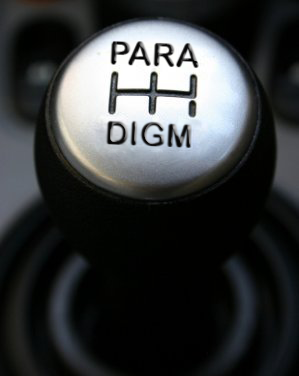And we’re back (sorry for the delay in posts). In this episode of Seinfeld on Marketing, George bought a new (used) car:
JERRY: Hey! Did you get the Volvo?
GEORGE: No, I decided to go with an ’89 LeBaron.
ELAINE: A LeBaron?
JERRY: I thought Consumer said Volvo was the car.
GEORGE: What Consumer? I’m the consumer.
JERRY: Alright. Seems like…a strange choice.
GEORGE: Well, maybe so…but it was good enough for Mr. Jon Voight.
ELAINE: Jon Voight? The actor?
GEORGE (Boasting): That’s right. He just happened to be the previous owner of the vehicle.
JERRY: You bought a car because it belonged to Jon Voight?
GEORGE (Defensive): No, no…
JERRY: I think yes, yes. You like the idea of telling people you’re driving Jon Voight’s car.
GEORGE: Alright, maybe I do. So what.
Okay, so maybe George only bought his Chrysler because he thought someone famous previously owned it and not for the “cool factor” of the LeBaron. But Chrysler is trying to change this.
Chrysler CEO Bob Nardelli (of Home Depot fame), is now mandating Chrysler’s 300 top executives call one recent purchaser each day to ask them if they are having any problems and to resolve any issues.
I love the idea of calling your customers and talking to them (how novel!) I am, however, concerned with one quote in the article. Doug Betts, Chrysler’s Vice President and Chief Customer Officer was quoted as saying, “the No. 1 influence in buying a car isn’t having Consumer Reports recommend it, it’s having a friend or family member recommend the car because they had a good experience with it.”
My problem is not with this statement (I believe it to be true). But I’m worried that Chrysler will confuse having “no problems” with your car and increasing your likelihood to talk to your friends about your new Chrysler.
A pop quiz: Quick, tell me what you had for dinner last Tuesday night? Odds are you can’t remember but I’m sure it was something that satisfied your hunger.
Chrysler’s current process only follow this same satisfaction model:

But is that really enough?
If I were to ask you about the last meal that you craved, I bet you could tell me every detail down to the last tender morsel of the pork loin or the rich and creamy sauce over your asparagus.
Chrysler should have it:

Question: Are you making something people crave or are you simply satisfying their hunger?
Happy Friday everyone!
[Side note: Can you believe that this week is the 10th anniversary of the last episode of Seinfeld (May 14th, 1998)?]
This post is part of a weekly series, Seinfeld on Marketing.
Filed under: Branding, Business, Customer Service, Loyalty, Marketing, Seinfeld on Marketing | Leave a comment »





 (3.5 / 5 stars)
(3.5 / 5 stars)




